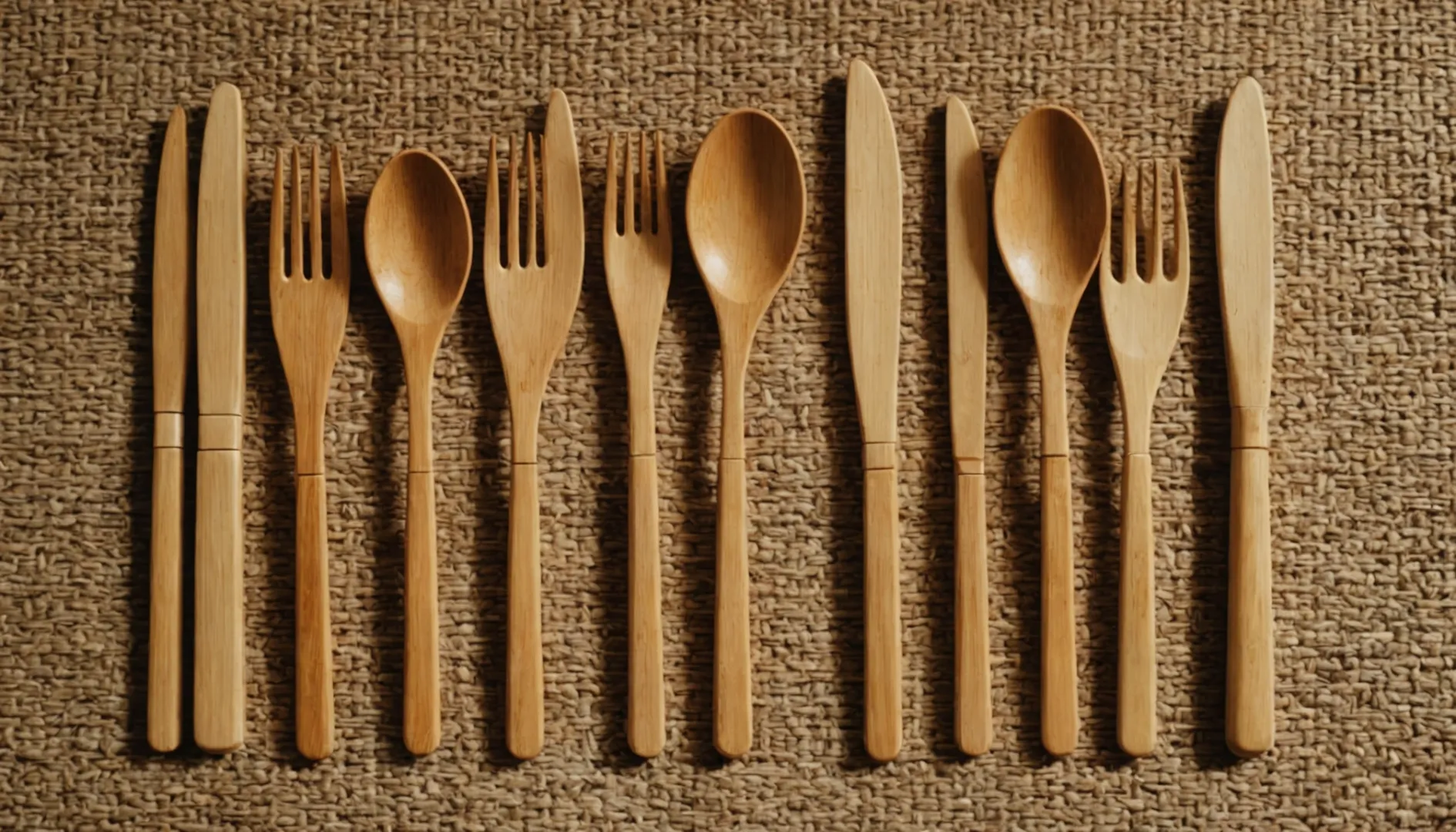
Choosing eco-friendly materials can feel overwhelming, but it’s essential for our planet. Let’s explore whether bamboo or wooden cutlery is the better choice for sustainability.
Bamboo cutlery is generally more sustainable than wooden due to bamboo's rapid growth rate and lower environmental impact during cultivation. However, both are more eco-friendly compared to plastic alternatives.
But before we dive deeper, let me share what I’ve learned about their lifecycle and environmental implications—it's quite enlightening!
Bamboo cutlery is more sustainable than wooden cutlery.True
Bamboo grows faster and requires fewer resources, making it more sustainable.
How Does the Production Process Affect Sustainability?
Understanding the production process is crucial for assessing the sustainability of materials like wooden and bamboo cutlery. This process influences environmental impact from resource extraction to end-of-life disposal.
The production process affects sustainability by influencing resource efficiency, emissions, and waste generation. Sustainable practices like using eco-friendly coatings and minimizing energy consumption enhance the eco-friendliness of cutlery production.
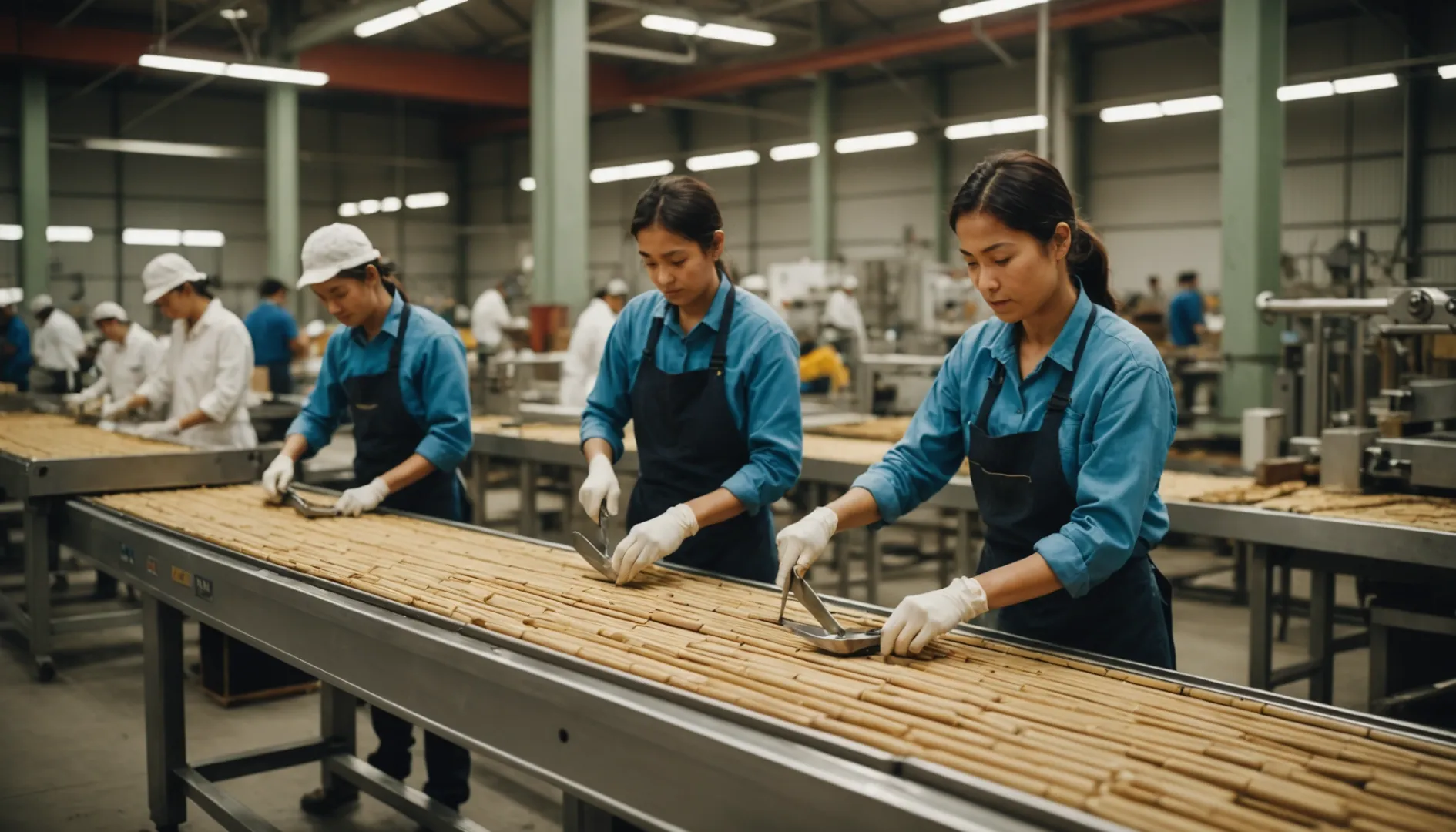
The Role of Raw Material Sourcing
Sustainable sourcing is a critical component of the production process that significantly impacts the environmental footprint of cutlery. For wooden cutlery, selecting wood from responsibly managed forests is essential. This involves adherence to certifications like FSC (Forest Stewardship Council), which ensures that the wood is harvested legally and sustainably. Similarly, bamboo, known for its rapid growth and minimal resource requirements, is often considered more sustainable. However, sourcing still needs careful management to prevent over-exploitation and maintain biodiversity.
Manufacturing Techniques and Energy Use
The efficiency of manufacturing techniques directly affects the sustainability of disposable cutlery. Traditional methods that consume high energy or produce significant waste can undermine environmental benefits. Advances in manufacturing technology allow for more energy-efficient processes and reduce waste through precise cutting and minimal material use. Companies employing Life Cycle Analysis1 can optimize their production processes, identifying stages where energy conservation or waste reduction is possible.
Importance of Coatings and Treatments
Coatings used in cutlery production also play a role in sustainability. Traditional chemical-based coatings can be detrimental to the environment and human health. Instead, using natural coatings, such as beeswax or plant oils, enhances biodegradability while maintaining functionality. For instance, natural coatings provide protection against moisture and bacteria without compromising the compostability of wooden utensils. It's crucial for manufacturers to ensure these coatings are food-safe and environmentally friendly.
Waste Management and Recycling
The sustainability of the production process is also tied to how waste is managed. Implementing recycling programs or using leftover wood chips in other products helps minimize environmental impact. Additionally, focusing on designs that require less material without sacrificing durability can further reduce waste. Some companies are experimenting with innovative ways to reuse production waste, thereby closing the loop and enhancing sustainability.
Transparency and Traceability in Supply Chains
Transparency in the supply chain is increasingly important for ensuring sustainable practices are followed from start to finish. Technologies like blockchain offer a means to track raw materials from origin to final product, assuring consumers that their cutlery has been produced sustainably. This not only builds consumer trust but also aligns with stringent regulations in markets focused on eco-friendliness.
Future Trends in Sustainable Production
The future of sustainable cutlery production lies in further innovation. From exploring alternative materials like bamboo fiber composites to enhancing production efficiency with AI-driven technologies, the focus remains on reducing environmental impact while meeting consumer demand for eco-friendly products. The shift towards renewable energy sources in manufacturing facilities is another promising trend that contributes to reducing carbon footprints.
As regulations on single-use plastics become stricter globally, embracing sustainable practices in cutlery production is not only beneficial but necessary for competitiveness in the market.
Bamboo cutlery is more sustainable than wooden cutlery.True
Bamboo grows rapidly and requires fewer resources, making it more sustainable.
Traditional chemical coatings enhance biodegradability of cutlery.False
Natural coatings like beeswax enhance biodegradability, not chemical ones.
What Are the Environmental Impacts of Harvesting Bamboo vs. Wood?
Choosing between bamboo and wood involves understanding their distinct environmental impacts during harvest.
Harvesting bamboo is generally less harmful to the environment than wood due to bamboo's rapid growth and minimal land disturbance. Bamboo's cultivation requires fewer pesticides and fertilizers, making it a more sustainable choice. Conversely, wood harvesting can lead to deforestation and habitat loss if not managed responsibly.
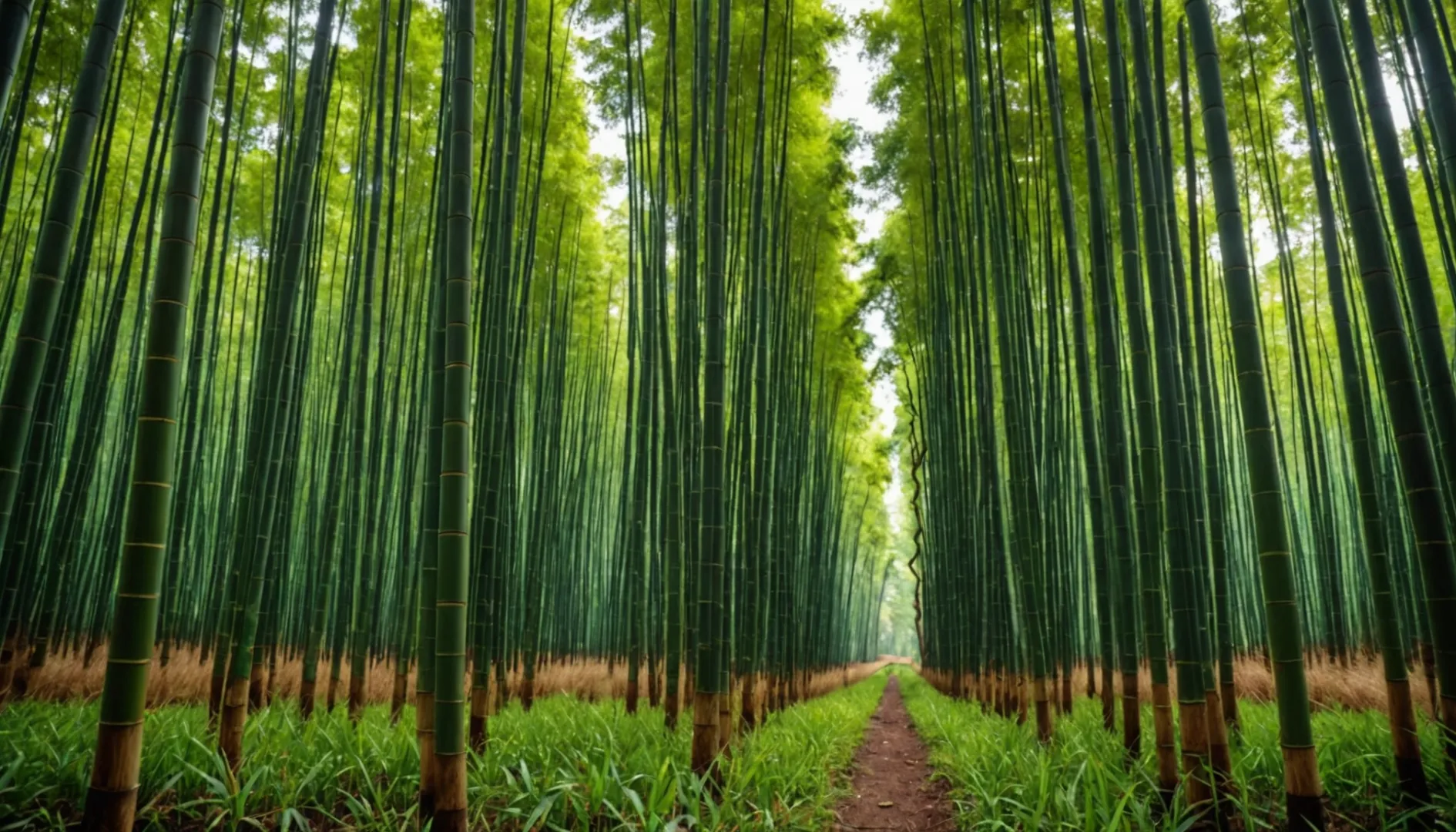
Bamboo: A Rapidly Renewable Resource
Bamboo stands out as an environmentally favorable option2 largely due to its growth rate. It can grow up to 91 cm (about 36 inches) in just one day, allowing for multiple harvests annually without replanting. This rapid regeneration minimizes land use, as fields don't need to be cleared and replanted as frequently as with traditional wood sources.
Moreover, bamboo cultivation typically requires less intervention with chemicals such as pesticides and fertilizers. This aspect reduces the risk of soil and water pollution, contributing to a healthier ecosystem. Since bamboo plants have extensive root systems, they also help prevent soil erosion, further enhancing their environmental benefits.
Wood: Sustainable When Managed Well
Wood harvesting presents a more complex environmental picture. While trees take significantly longer to mature—often decades before they're ready for harvest—their impact can vary widely depending on forest management practices. Sustainably managed forests, such as those certified by the Forest Stewardship Council3, aim to balance logging activities with ecosystem conservation.
However, irresponsible logging leads to deforestation, loss of biodiversity, and disruption of habitats for wildlife. Even under sustainable practices, the carbon footprint of wood can be substantial due to the energy required for logging and transportation.
Comparing Carbon Footprints
| Aspect | Bamboo | Wood |
|---|---|---|
| Growth Rate | Rapid | Slow |
| Land Use | Minimal due to fast regrowth | Significant |
| Chemical Use | Low | Varies (can be high) |
| Carbon Footprint | Lower overall | Higher without sustainable practices |
In summary, while both materials have renewable qualities, bamboo generally leaves a smaller environmental footprint from harvest to production compared to wood. Yet, opting for either material should involve considering certification and sourcing practices to ensure minimal environmental harm.
Bamboo grows up to 91 cm in a day.True
Bamboo is known for its rapid growth, reaching up to 91 cm daily.
Wood requires fewer pesticides than bamboo.False
Bamboo typically needs fewer pesticides than wood, reducing pollution.
How Do Durability and Maintenance Compare Between the Two?
Comparing durability and maintenance of bamboo versus wooden cutlery is crucial for eco-conscious consumers. Discover which stands up better over time.
Bamboo cutlery generally requires less maintenance and is more durable than wooden cutlery due to its natural resistance to water and bacteria, although both require proper care for longevity.
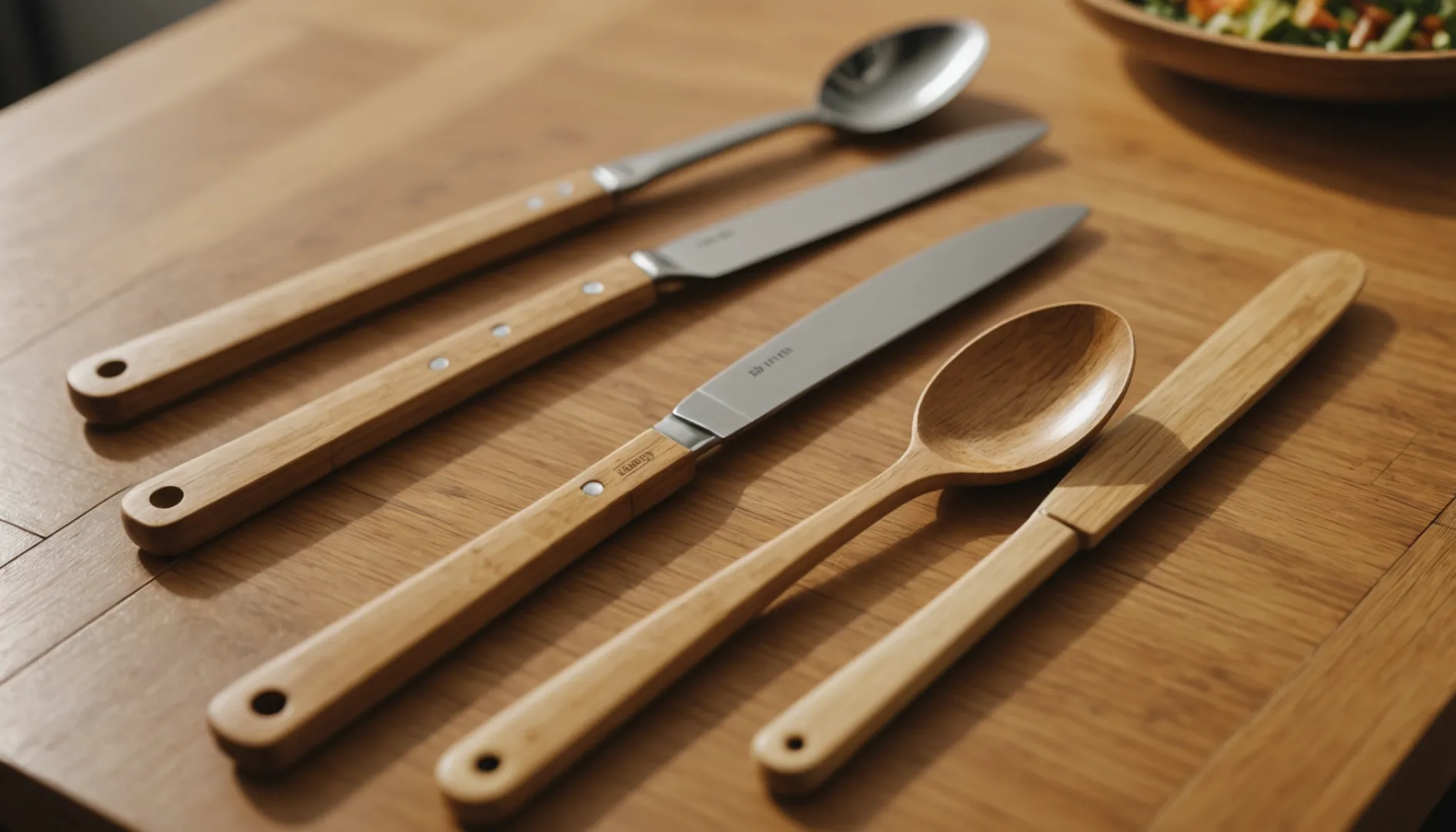
Comparing Material Properties
When evaluating bamboo cutlery4 against wooden cutlery, it's essential to consider the intrinsic properties of each material. Bamboo, being a grass, has a high tensile strength and flexibility, making it naturally resilient to cracking and breaking. Its dense fiber structure gives it an edge over wood in terms of durability, especially under regular use.
In contrast, wooden cutlery can vary in durability depending on the type of wood used. Hardwoods like maple and oak offer superior resilience compared to softwoods like linden. However, all types of wood are susceptible to moisture and temperature fluctuations, which can lead to warping or splitting over time if not properly maintained.
Maintenance Practices
Proper maintenance significantly impacts the lifespan of both bamboo and wooden utensils. Bamboo cutlery requires minimal upkeep because of its natural resistance to moisture and bacteria. It can be easily cleaned with mild soap and water, making it a low-maintenance option for daily use. However, avoiding prolonged exposure to water and high heat is advisable to prevent damage.
Wooden cutlery demands a more rigorous maintenance routine to preserve its quality. Regular oiling with food-safe oils is recommended to maintain the wood's natural finish and prevent drying or cracking. Furthermore, wooden utensils should be hand-washed and thoroughly dried after each use to mitigate bacterial growth and material degradation.
Environmental Considerations
Both materials are biodegradable, but their lifecycle impacts differ. Bamboo's rapid growth rate makes it a more sustainable resource compared to slower-growing hardwoods. This factor contributes to bamboo's appeal as an eco-friendly alternative.
However, sustainability also hinges on responsible sourcing and manufacturing practices. For instance, using eco-certified wood5 ensures that the cutlery is produced under environmentally friendly conditions, minimizing its ecological footprint.
| Material | Durability | Maintenance |
|---|---|---|
| Bamboo | Highly durable | Low maintenance |
| Wooden (Hardwood) | Durable but varies | Regular oiling required |
| Wooden (Softwood) | Less durable | High maintenance required |
Usage Scenarios
Understanding the appropriate use cases for each type of cutlery can also guide decision-making. Bamboo cutlery is ideal for casual settings or outdoor events due to its sturdiness and ease of cleaning. Meanwhile, high-quality wooden cutlery might be preferable in fine dining settings where aesthetic appeal and tactile experience are prioritized.
Ultimately, while bamboo's natural properties offer a lower-maintenance solution with excellent durability, wooden cutlery—with careful care—can also provide long-lasting service, making it a viable choice for those prioritizing traditional aesthetics or specific tactile preferences.
Bamboo cutlery is more durable than wooden cutlery.True
Bamboo's dense fibers and resistance to water enhance its durability.
Wooden cutlery requires less maintenance than bamboo cutlery.False
Wooden cutlery needs regular oiling and careful cleaning to maintain quality.
Can Both Bamboo and Wooden Cutlery Be Composted?
As the demand for eco-friendly products rises, understanding the compostability of bamboo and wooden cutlery is essential for sustainable choices.
Yes, both bamboo and wooden cutlery can be composted, but they must be free of synthetic coatings or contaminants to break down effectively.
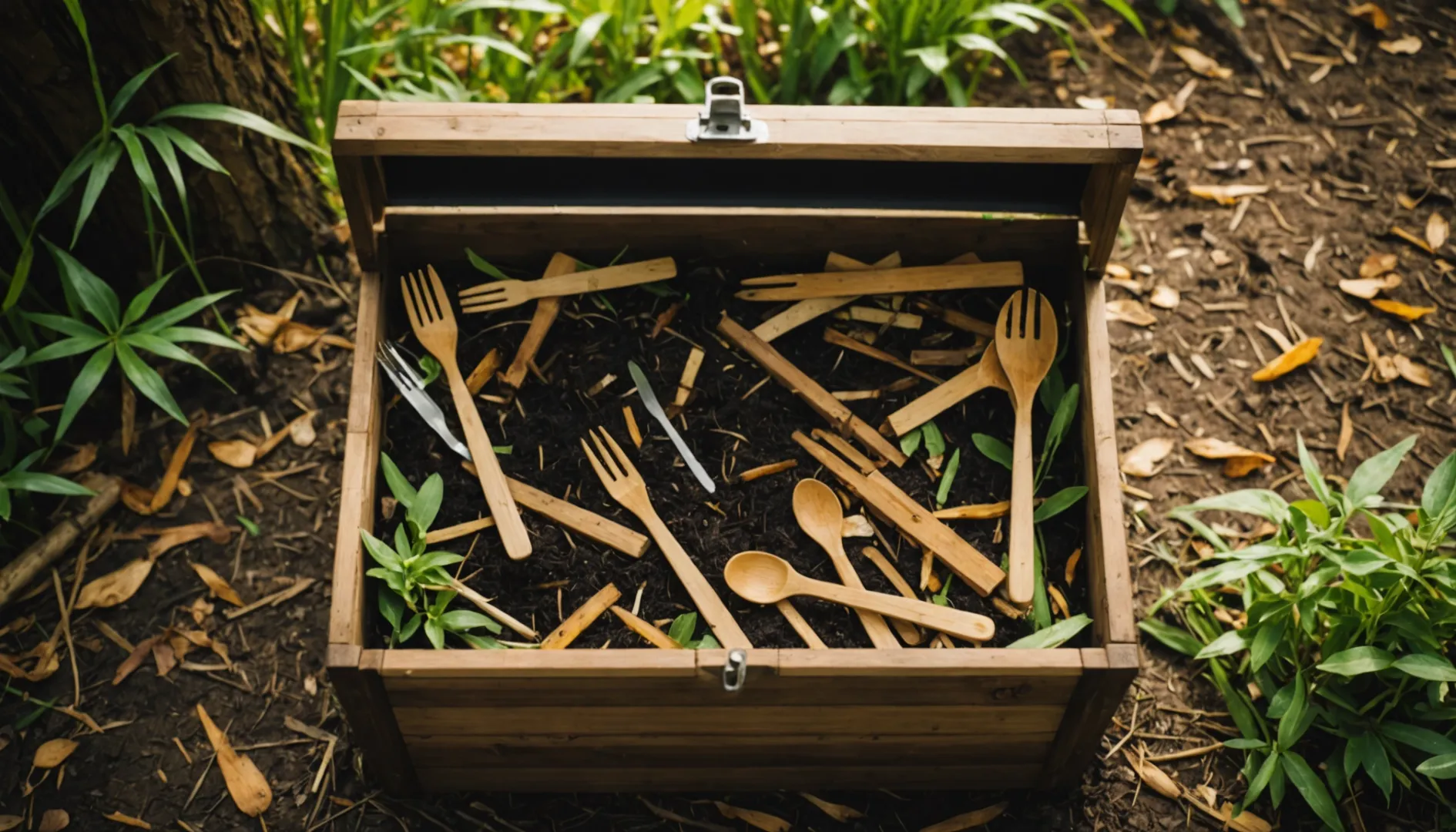
Understanding Compostability
Composting is a natural process that turns organic waste into nutrient-rich soil. For bamboo and wooden cutlery to be composted effectively, they need to be untreated and free from any synthetic materials. Many manufacturers use food-safe oils or waxes, which are generally compostable, but it's crucial to check for any non-biodegradable coatings that could hinder decomposition.
Differences in Decomposition Rates
While both materials are compostable, the rate at which they break down may vary. Bamboo generally decomposes faster than wood due to its softer structure and rapid growth cycle. This makes bamboo a preferable choice for those looking to minimize waste quickly. However, both will eventually break down, contributing organic matter back to the earth.
Steps to Composting Cutlery
- Preparation: Ensure cutlery is clean and free from food residues. Remove any coatings if possible.
- Shredding: Cut or shred larger pieces to accelerate the breakdown process.
- Composting Method: Add the cutlery to a balanced compost pile with a mix of greens (nitrogen-rich materials) and browns (carbon-rich materials).
- Monitoring: Maintain the pile by turning it regularly and ensuring adequate moisture.
Challenges in Composting Cutlery
- Coatings: Some bamboo and wooden cutlery are treated with synthetic coatings that are not compostable.
- Size: Larger pieces may take longer to decompose unless shredded.
- Composting Facilities: Not all facilities accept these materials, so home composting might be necessary.
The Role of Certifications
Certifications like the FSC label6 ensure that the wood used is sourced sustainably, adding credibility to its eco-friendly claims.
- Bamboo: Rapid growth and lower environmental impact during cultivation make it a more sustainable option.
- Wood: Offers a familiar texture but may take longer to decompose compared to bamboo.
Understanding these factors can help you make informed decisions about using and disposing of bamboo and wooden cutlery responsibly.
Bamboo cutlery decomposes faster than wooden cutlery.True
Bamboo's softer structure and rapid growth cycle allow quicker decomposition.
All bamboo and wooden cutlery are compostable as-is.False
They must be free of synthetic coatings to compost effectively.
Conclusion
In summary, bamboo generally presents a more sustainable option compared to wooden cutlery. However, both deserve thoughtful consideration based on your specific needs.
-
Learn how LCA optimizes sustainability across production stages.: A Life Cycle Assessment (LCA) calculates the environmental impact of products or services throughout their entire lifecycle. ↩
-
Explore why bamboo is considered environmentally friendly.: According to research, bamboo releases 35% more oxygen into the air than your average tree. It can also absorb 12 tonnes of carbon dioxide per ... ↩
-
Understand the importance of sustainable forest management practices.: Environmental Protection - FSC's forest management standards expand protection of water quality, prohibit harvest of rare old-growth forest, ... ↩
-
Discover why bamboo is favored for its durability and eco-friendliness.: 1.Compostable&Biodegradable · 2. Sustainable · 3. Does not conduct heat · 4.No Scratches · 5. Safe for non-stick cooking surface · 6. Lightweight · 7. ↩
-
Learn how certifications ensure sustainable sourcing of wooden utensils.: Discover essential eco-certifications like FDA, LFGB, and FSC for ensuring the safety and sustainability of wooden cutlery. ↩
-
Learn about FSC certification's role in ensuring sustainable forestry practices.: FSC certification ensures that products come from responsibly managed forests that provide environmental, social and economic benefits. ↩

